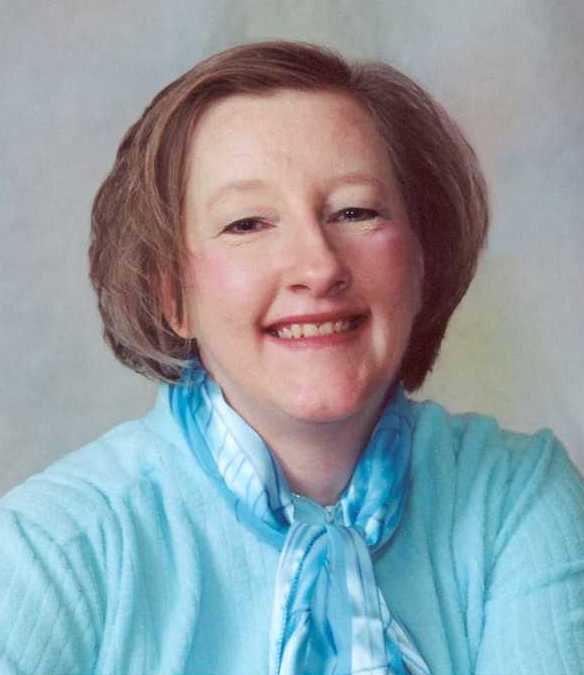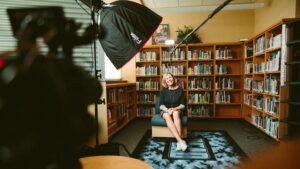
We have a special writer feature this week, just for Halloween! Pauline Bartel from our network operates her ghostwriting practice from an office in upstate New York. But at night, she returns to her haunted house where she lives with the ghost of the original owner. Learn more about Pauline, the curious happenings in her home, and her approach to ghostwriting in the Q&A below.
Pauline has more than four decades of experience as a professional writer, ghostwriter, and publishing consultant. She is the author of eight nonfiction books, including The Complete GONE WITH THE WIND Trivia Book, now in its second edition. Her byline has appeared in Seventeen, Mademoiselle, Woman’s Day and other national publications. As a book coach, she has helped more than 25 clients achieve their book publication dreams. She resides in upstate New York in a 1930s bungalow she shares with the ghost of the original owner. Follow her on Twitter @PaulineBartel and visit her website at www.paulinebartel.com.
Share the tale of this haunted house. How did you come to live there?
I had passed the charming 1930s bungalow many times during walks through the quiet neighborhood in the village of Waterford in upstate New York. In the summer of 2003, I noticed a for-sale sign on the lawn, so I took an open-house tour. The hardwood floors, the French doors and the built-in cabinets reminded me of my childhood home, and I fell in love with the place. It was like the house spoke to me and said, “I should belong to you.” I bought the property that October, right before Halloween.
What is the house’s history?
Edward Burgess built the Sears-Roebuck catalog kit house in July 1930. He and his wife, Margaret, raised four daughters there. Mrs. Burgess was a teacher; Mr. Burgess owned a printing company in the village. He also served as Waterford town supervisor for three years in the 1950s. Mr. Burgess lived in the house for 63 years. After he died in 1993, his estate sold the property to the second owner — a married couple with young children — who lived in the house for about 10 years. The couple sold the house to me. But I didn’t know anything about this history until after I began renovating the house and strange things started to happen.
Have you experienced anything while living there?
I planned to make the house my own before moving in, by painting throughout and having the floors refinished. One Sunday night, about a month after the closing, I was in the basement rinsing out paintbrushes in the soapstone sink, when I heard footsteps coming from the main floor. Thinking a friend had come over to help, I called out: “I’m in the basement.” But nobody answered. I chalked up the incident to the unfamiliar creakings of an old house. But then suddenly in my mind’s eye I had a vision. I saw a short, thin elderly man, wearing a cardigan sweater and horn-rimmed glasses. I sensed him looking over my shoulder, wondering who I was and what I was doing there. I turned around, but no one was there. That scared me, but I felt the presence of an entity so strongly that I introduced myself as the house’s new owner. I told him that I loved the house and that I would take good care of it. With that, the feeling of a presence vanished.
Two days later, a friend was painting in one of the bedrooms when he heard knocks coming from the closet. He was the one who first suggested that the house might be haunted.
A few days later, the second owner popped in while I was painting to see how I was getting along. I asked him whether he had ever experienced anything unusual in the house. He admitted that he thought a friendly spirit was in residence. He and his family had heard mysterious footsteps, saw lights turn on and off and found objects moved. He then told me about the house’s history.
I surmised that the ghost was Mr. Burgess, and his identity was confirmed for me at the Waterford Public Library. One of the library clerks — a Burgess family relation — showed me a scrapbook with photos of Mr. Burgess. In one of the photos was a short, thin elderly man, wearing a cardigan sweater and horn-rimmed glasses — the very image of the spirit I had experienced in my basement.
I’ve suggested that Mr. Burgess follow the Light to the Other Side, but he seems content to remain in the house. Since he’s a benevolent ghost, I’ve invited him to stay for as long as he wishes. Still, I’m momentarily unnerved when my bedroom fan turns on in the middle of the night, when I find a quarter hidden in my sneaker and — just this week — when I see a Halloween card fly off the dining room sideboard. But then I think those are just his ways of letting me know he’s still around.
How has living in this spooky location impacted you and your work?
I think Mr. Burgess is a lonely spirit, craving human interaction. I find that treating him as I would a family member creates a peaceful atmosphere in the house. I greet him in the morning and tell him about the work day ahead at my office, a building three blocks away and near where the Burgess Printing Company once stood.
When I return home at the end of the day, I walk the same sidewalks that Mr. Burgess strode in his day, so I feel a connection to him. He was a printer; I’m a writer. We share an affinity for words.
People who knew him in life tell me that he was a generous, kind man with a good sense of humor. I like to think that Mr. Burgess finds it amusing that I’m a ghostwriter living in a house that he haunts.
Tell us about your writing practice. How did you begin writing and how did you break into the industry? When did you know you could make a career out of it?
I had a talent for writing that my parents, high school teachers and college professors encouraged. After earning a business degree, I took a medical secretarial job that I hated.
Knowing that I loved to write, a friend suggested that I sign up for an adult-education magazine writing course at SUNY Albany. I did, and it changed my life.
The teacher, who was also a published author, recognized my abilities and nurtured my fledgling efforts. For an assignment to create a list of possible magazine article ideas, I submitted a list that included biorhythm, a popular science topic at the time. My teacher thought the idea was good but too broad for a magazine article. Would I consider writing a book instead? I hadn’t written anything professionally at that point, but he had such confidence in me that I agreed.
He restructured the course so that, while the other students were writing articles, I was preparing with his guidance a book proposal and a query letter. At his recommendation, I queried an editor he knew at Franklin Watts. She requested the proposal and sample chapters.
Unbelievably, one month later, I had a contract for my first book: Biorhythm: Discovering Your Natural Ups and Downs (Franklin Watts, 1978). That book was followed by two books about Gone With the Wind, two books about Elvis, a book about animal actors, a book about witches and witchcraft and a revised edition of my best-selling work The Complete GONE WITH THE WIND Trivia Book — all published by Taylor Trade Publishing.
Tell us what you can about your ghostwriting career. How did you get into that practice?
I was taking courses part time for my master’s degree, and I was a member of a study group of six women. One woman was an editor at an educational publishing company, and she knew that I was a book author. After one of our study sessions, she told me that one of her book projects was in big trouble and that she needed a ghostwriter. Would I be willing to meet with her and the author to discuss taking on the project?
At the meeting, I clicked with the author and was hired as the ghost. Four weeks later, I delivered a completely rewritten 60,000-word manuscript that received rave reviews from the editor, the author and, eventually, readers. The book proved so successful that the publisher ordered a revision several years later, and I ghosted that edition as well.
What special considerations are required for collaborating on a book?
I believe that brilliant ideas blossom through close collaboration with clients. That means I ask questions and listen to the answers until I understand the book’s goals, message and audience. I synthesize information, share ideas and shape the direction of each book with the client. Then I add the hallmarks of my work: creativity, excellence and results.
How do you know if an idea — yours or someone else’s — is strong enough to develop into a book?
As the client tells me the story, I listen. If the narrative grabs my attention initially and then gets better and better during the telling, I know the client has a book-worthy idea.
For my own ideas, I think of myself as the reader. Would I be excited to learn about this book? Would I be eager to read this book? If I answer “yes” to both questions, I know I have a strong book idea
What does your writing routine look like? How do you stay productive and overcome blocks?
Writing a book is like eating an elephant. You have to do it one bite at a time. I create daily action plans for projects. These enable me to see at a glance the tasks I’ve assigned myself each day. I take “bites of the elephant” in the morning when my creativity and energy are high. In the afternoon, I do research or conduct interviews.
When I’m writing, I set a timer for 60 minutes. That compels me to remain focused on a portion of a project for a sustained period. At the end of the writing block, I identify the next three things I must do to move the project forward. Since I’ve outlined action steps for the next writing session, I manage to avoid writer’s block.
What are you working on next?
I’m under contract for GONE WITH THE WIND: Day by Day, a book that chronicles the production, premieres and promotions of the iconic film from January 1, 1939 through December 31, 1939. Daily, behind-the-scenes entries provide a snapshot of what was happening on and off the set with insightful, expert commentary about the cast, the crew, the chaos of filming and more. The book will be published by Globe Pequot Press, a subsidiary of the Rowman & Littlefield Publishing Group in 2021. The book’s publication will be timed to advantage: The 2023 calendar will be identical to the 1939 calendar year. Fans will enjoy following the day-by-day drama and intrigue of Gone With the Wind’s production, on each event’s exact date. Readers will also be primed for the movie’s 85th anniversary in 2024.
I’m also writing a memoir called Ghosts I Met on the Long Way Home. This is the true account of my journey through the grief, my quest for a home of my own and my struggles with the ghosts I meet along the way. One ghost is my mother; the other ghost is Mr. Burgess. Through the journey, I discover that things are not always what they seem and that I must learn to get along with different kinds of people — whether they are alive or dead.
Do have a chilling tale to tell? Pitch your idea to us below, and we’ll match you with a writer like Pauline who can help you bring your vision to life.



